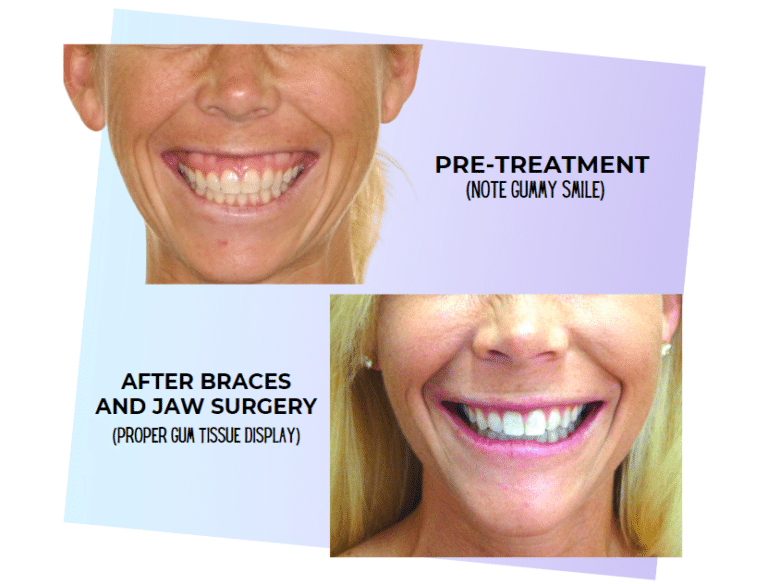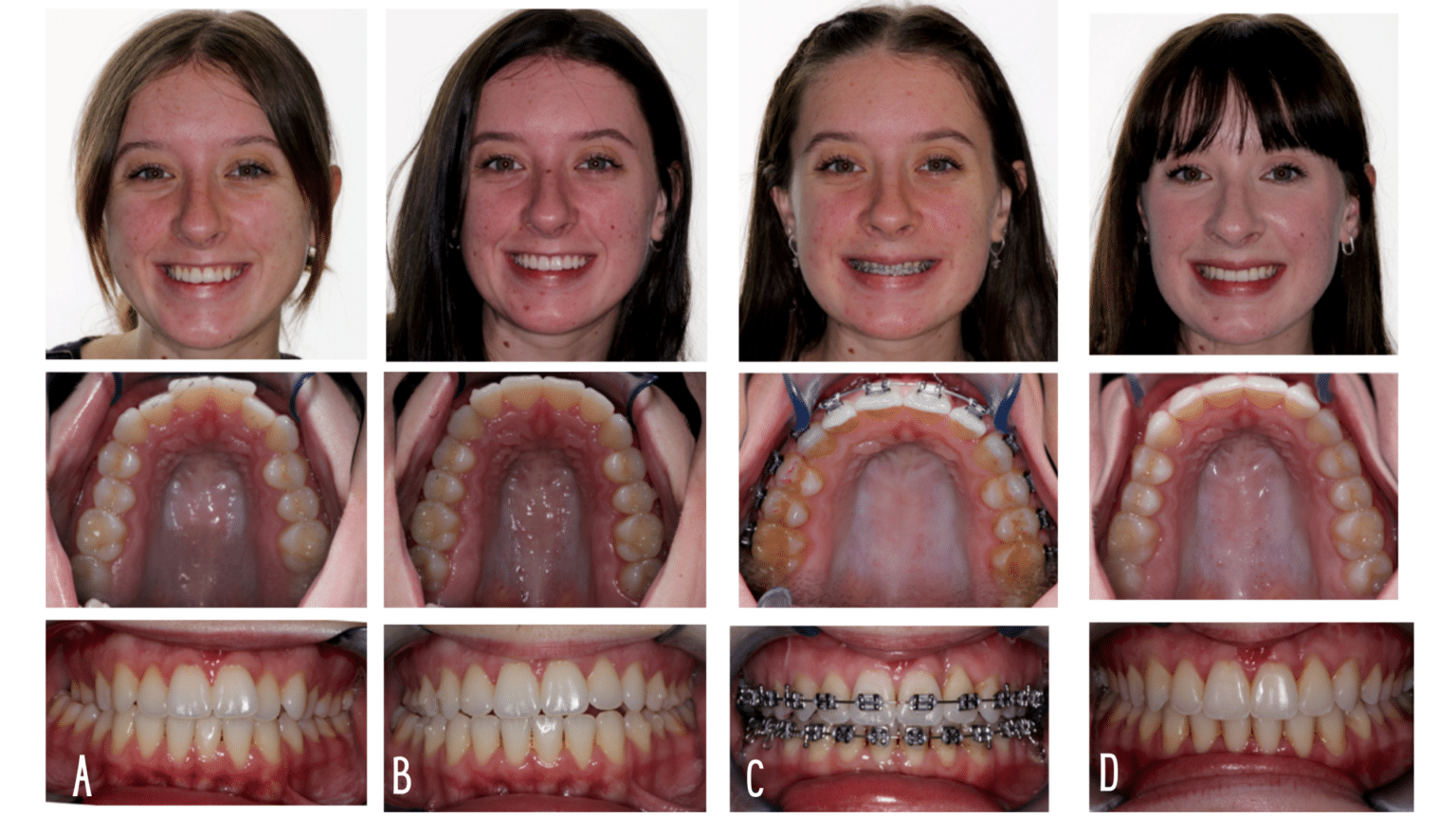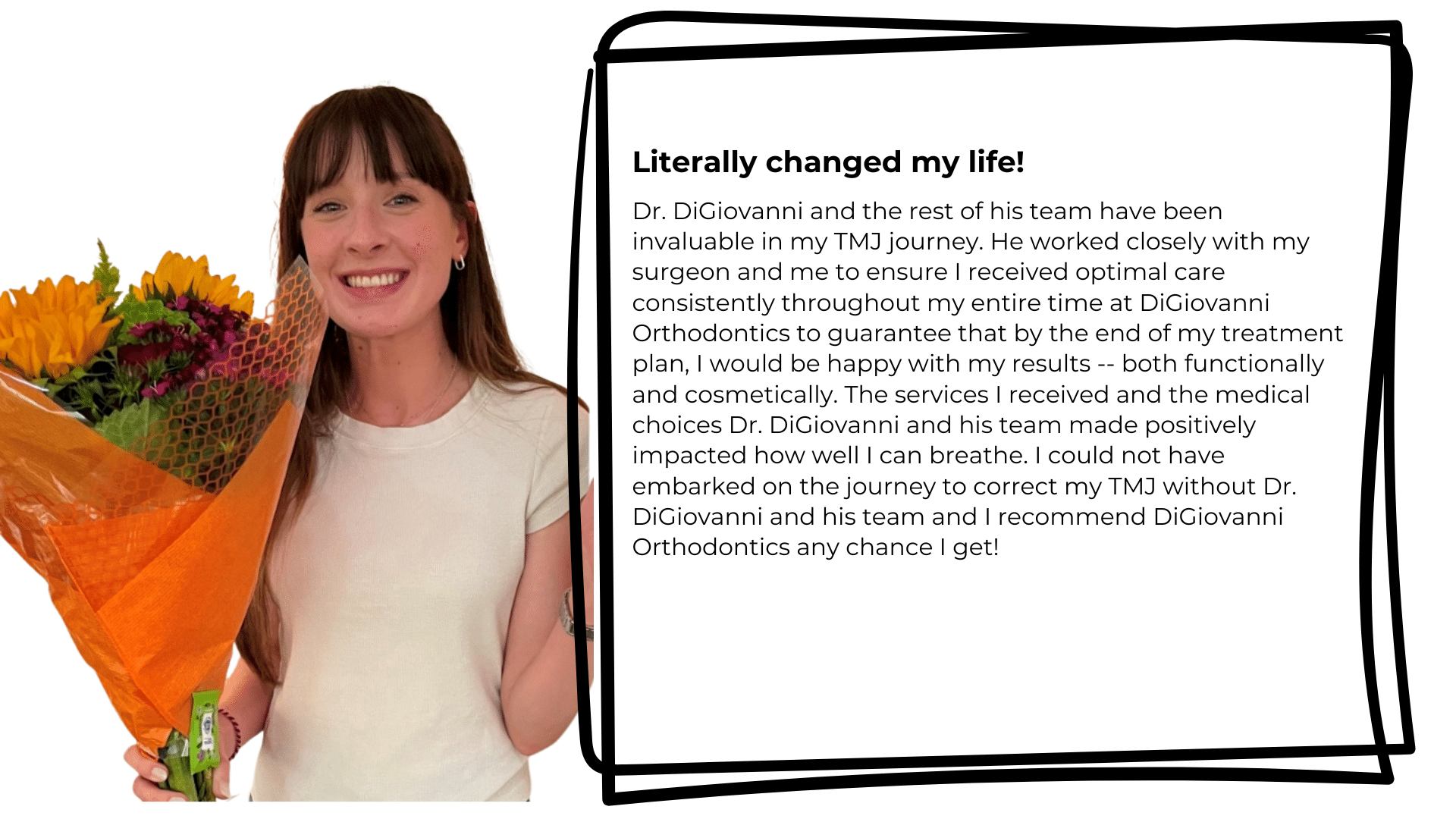jaw surgery and orthodontics
Healthy and attractive faces work as a balanced “system” involving not just alignment of the teeth but also proper alignment of the jaws, joints, gums, lips, and tongue. Each part of the system influences another. The way we breathe, speak, swallow, and chew dramatically influences skeletal shape and form during jaw development.
Unfortunately, many patients have orthodontic problems that are due to improper development of the jaws during growth. Improper alignment of the jaws can be progressively harmful leading to breakdown of this system sometimes early, and other times later one’s life.
Besides improper tooth alignment, these conditions are often revealed by snoring and sleep apnea. Improper breathing can cascade a multitude of problems, resulting in significant adverse effects one’s health. In these situations, surgical repositioning of the jaw is necessary in conjunction with orthodontic tooth alignment to restore the system.

Invisalign has developed a removable 3D-printed nylon palatal expander called the Invisalign Palatal Expander (IPE). It consists of a series of 3D-printed expanders, which follow the curvature of the palate and cover the posterior teeth. Each expander has an activation of 0.25 mm and is designed to be worn full-time and changed to a new tray daily or every other day, according to Dr. DiGiovanni’s prescription.
jaw surgery and orthodontics
Jaw surgery is performed by an Oral Surgeon in conjunction with orthodontic treatment by Dr. DiGiovanni to correct a wide range of jaw and tooth problems. While the patient’s appearance may be enhanced as a result of surgery, jaw surgery is a medically necessary procedure primarily performed to correct functional problems.
Jaw surgery is typically covered under your medical (NOT dental) insurance plan.
A typical orthodontic and jaw surgery treatment plan proceeds as follows:
Jaw surgery process explaned
jaw surgery and orthodontics

Diagnosis: Cross Bite, Facial Asymmetry, Midline, Jaw Problems, Constant Headaches
A: Pre-Treatment Cross Bite/Asymmetry Malocclusion
B: Pre-Surgical Orthodontic Set Up
- Invisalign to set up teeth for surgery
- Teeth are aligned, but the bite is not corrected
C: Post-Surgical Result
- Braces often are placed for surgery (Typically 3-4 months)
- 1-2 weeks of downtime is standard but varies per patient
D: Final Result (19 months)
- Braces are removed, and Invisalign is resumed
- Bite fully corrected, facial symmetry established
- Headaches eliminated, smile widened, midline improved
- Improved airway and sleep quality


most common questions we are asked about jaw surgery
You may need jaw surgery if you experience the following:
Frequent jaw pain or headaches.
Trouble biting, chewing, or swallowing.
Problems with snoring, sleeping, or breathing.
An “open bite” where front teeth do not come together.
Facial injury or unbalanced jawline appearance.
Here’s a general timeline for jaw surgery and braces (or Invisalign):
Before surgery: Orthodontists typically place braces on teeth 6-12 months before surgery to align and level them.
Surgery: The braces are not removed for the operation.
After surgery: Braces are typically worn for 6 months after surgery.
Appointments: Patients usually have regular appointments with their orthodontist every six weeks to adjust their braces.
Dr. DiGiovanni will guide you with all specifics related to your orthodontic treatment including referring you to a Jaw Surgery Specialist.
It really depends upon your specific case. Many patients are candidates for Invisalign in conjunction with jaw surgery. Dr. DiGiovanni will guide you with all specifics related to your orthodontic treatment including the best modality for treatment (Invisalign/Braces, etc.)
No. Dr. DiGiovanni does the pre-surgical alignment and prepares you for the surgical procedure. The actual surgery itself is performed by a Jaw Surgery Specialist.
Sometimes. Dr. DiGiovanni will always present ALL OPTIONS AVAILABLE including the option on orthodontic treatment without surgery.
The cost of jaw surgery can vary widely depending on the type of procedure, the surgeon’s experience, your insurance benefit and other factors. If you need jaw surgery it is best if you meet with the surgeon to discuss the surgical costs involved.
AW SURGERY IS COVERED UNDER MEDICAL, NOT DENTAL INSURANCE. Whether your insurance covers Jaw Surgery can depend on several factors, including your specific insurance plan and provider. Here are some general points to consider:
Coverage Details: Many dental insurance plans offer some level of coverage for orthodontic treatments, but the extent can vary. Some plans might cover a portion of the costs for Jaw Surgery while others may not1.
Waiting Periods: Some insurance plans have waiting periods before orthodontic benefits kick in. This means you might need to wait a certain amount of time after enrolling in the plan before you can use the orthodontic benefits2.
Pre-Authorization: Your insurance provider might require pre-authorization for orthodontic treatments. This means you would need to get approval from your insurance company before starting treatment to ensure it will be covered1.
To get a definitive answer, it’s best to contact your insurance provider directly. They can give you detailed information about your specific plan’s coverage for Phase I orthodontics
Jaw Surgery Results
Following are examples of patients who underwent and benefitted from orthodontic treatment in conjunction with corrective jaw (orthognathic) surgery in our office. You will see how destructive improper jaw alignment is and the myriad of problems it can cause:

Posterior cross bite, jaw asymmetry, headaches, jaw pain

Underbite, Cross bite, Jaw Asymmetry, Worn teeth

Severely Receding Lower Jaw (Convex Profile), Narrow Smile, Sleep Apnea

Severely Receding Lower Jaw (Convex Profile), Excess gum display when smiling, Narrow Smile, Sleep Apnea

Underbite, protruding lower jaw (Concave profile), lack of tooth display, cross bite and open bite

open bite, difficulty chewing and speaking, narrow smile, open mouth profile

Large overjet with receding lower jaw

Large underbite, lateral open bite, jaw asymmetry, posterior cross bite, edge to edge front bite with enamel chipping

severe tooth break down, excessive gum tissue display, difficulty chewing

underbite with concave profile, lack of upper lip support, narrow smile, open bite and gum recession

Asymmetry, receding lower jaw (convex profile), worn teeth and narrow smile

Large facial and jaw asymmetry with atypical lateral open bite and lack of tooth contact



